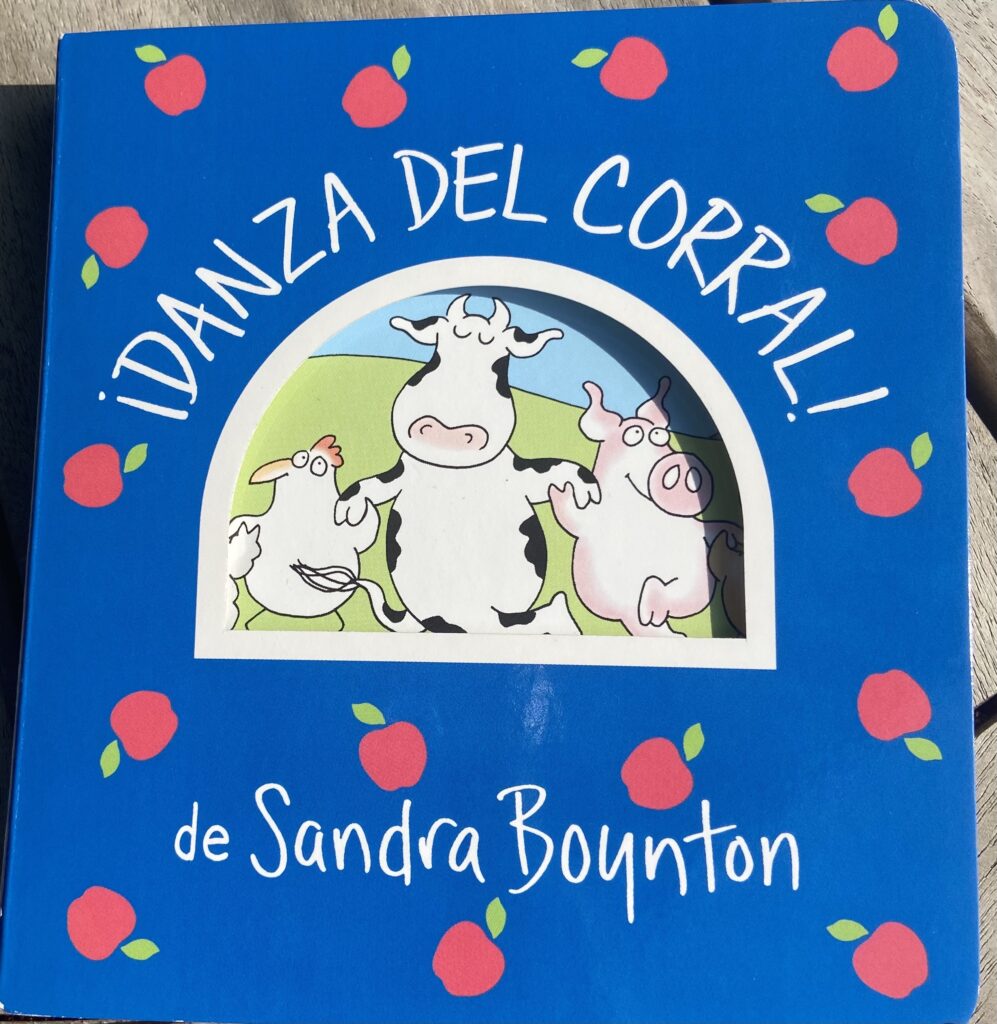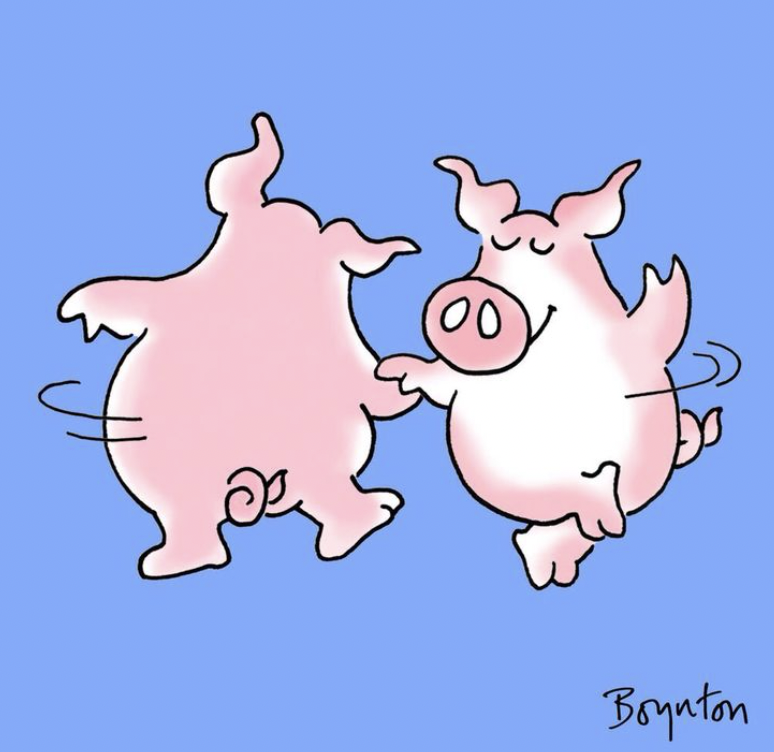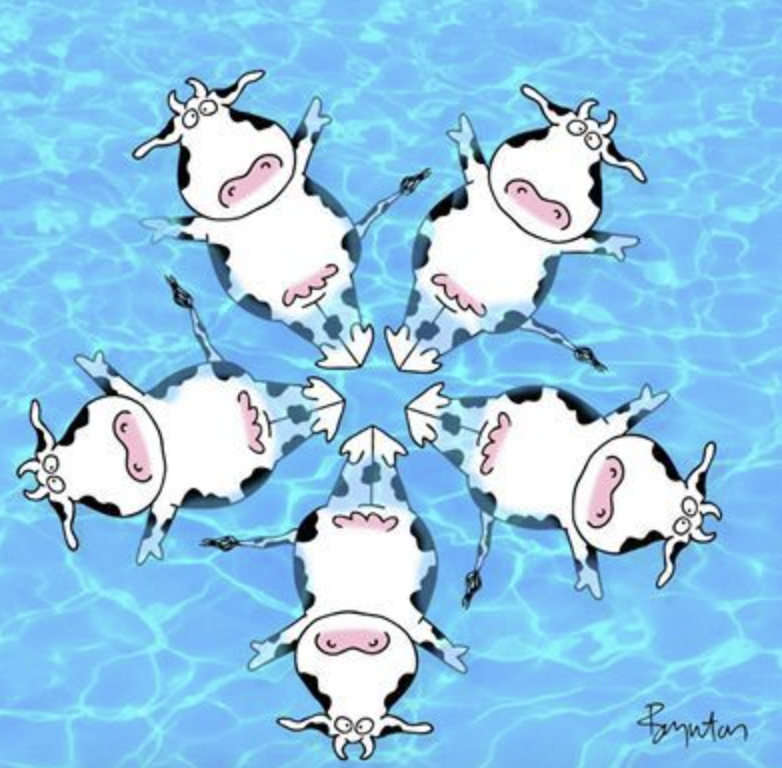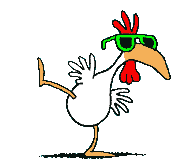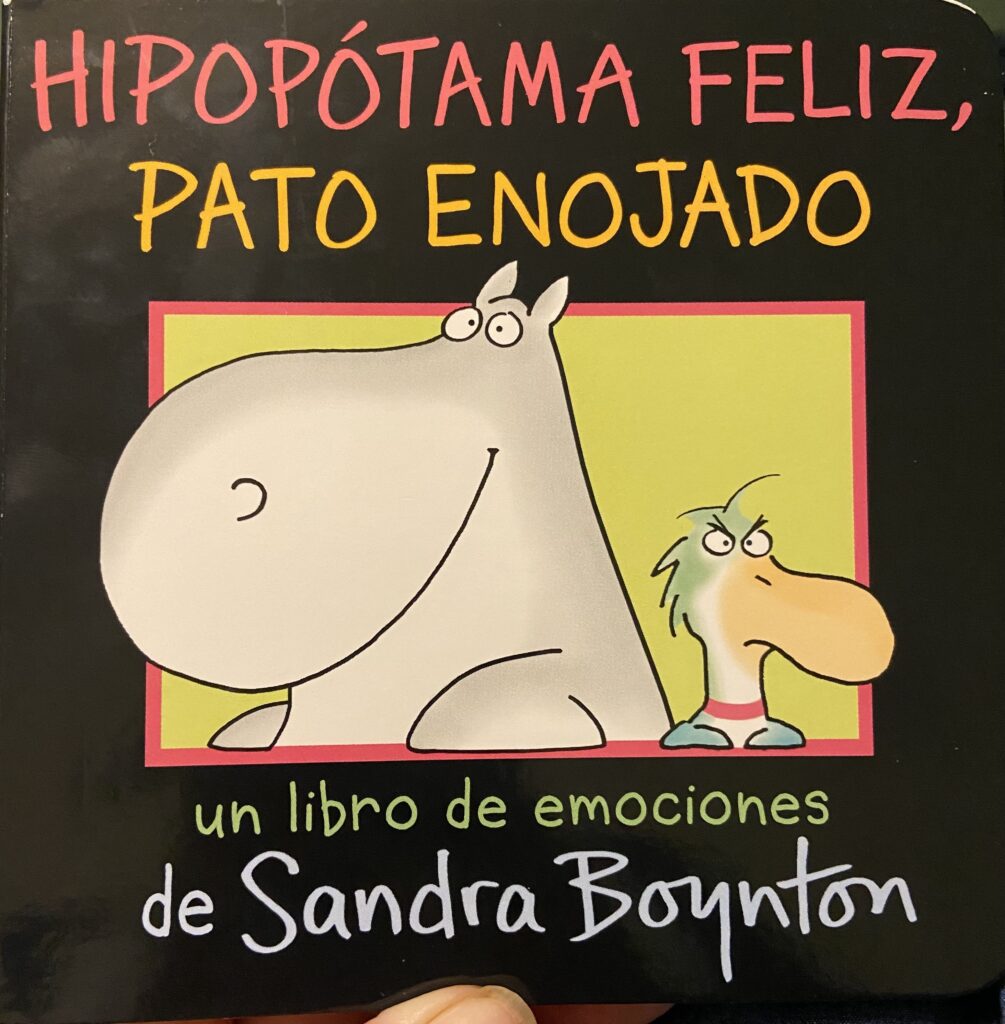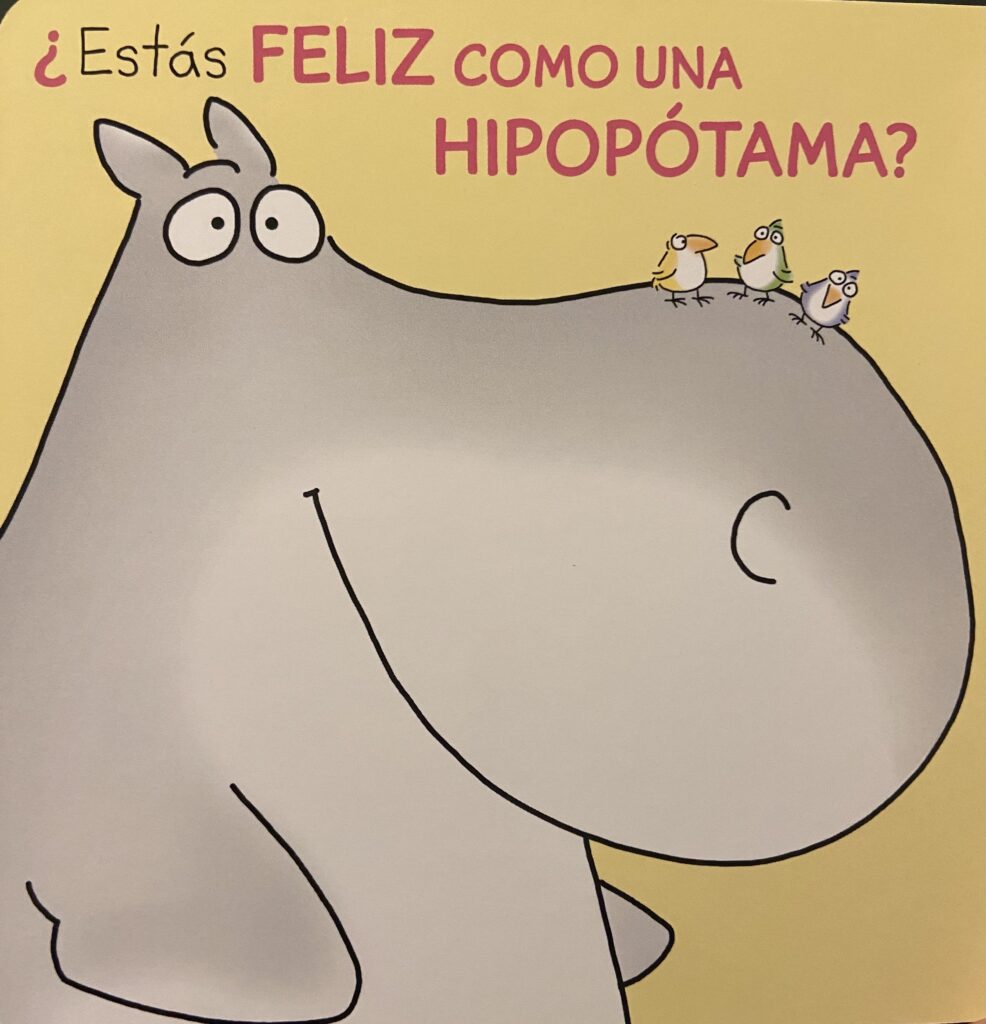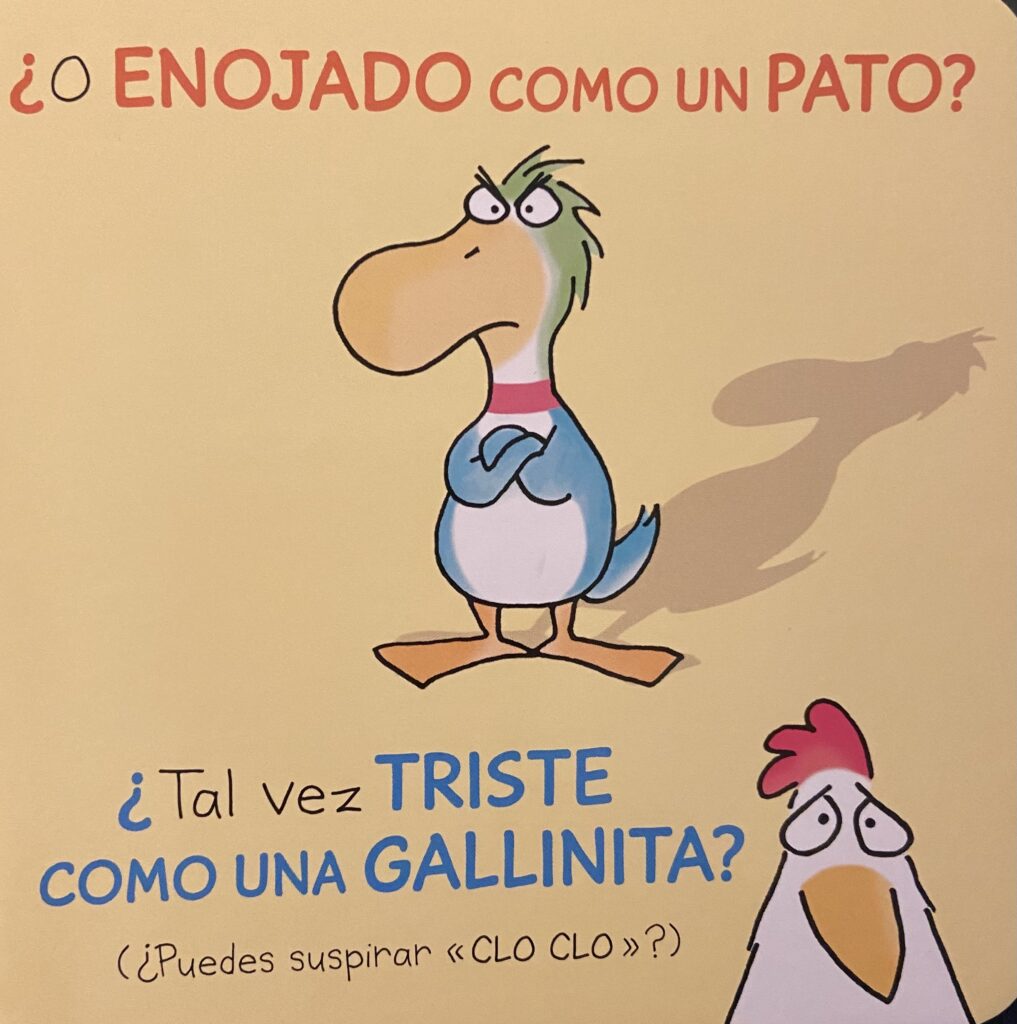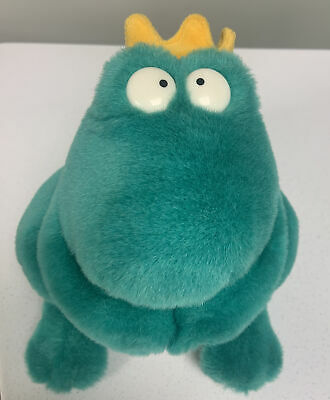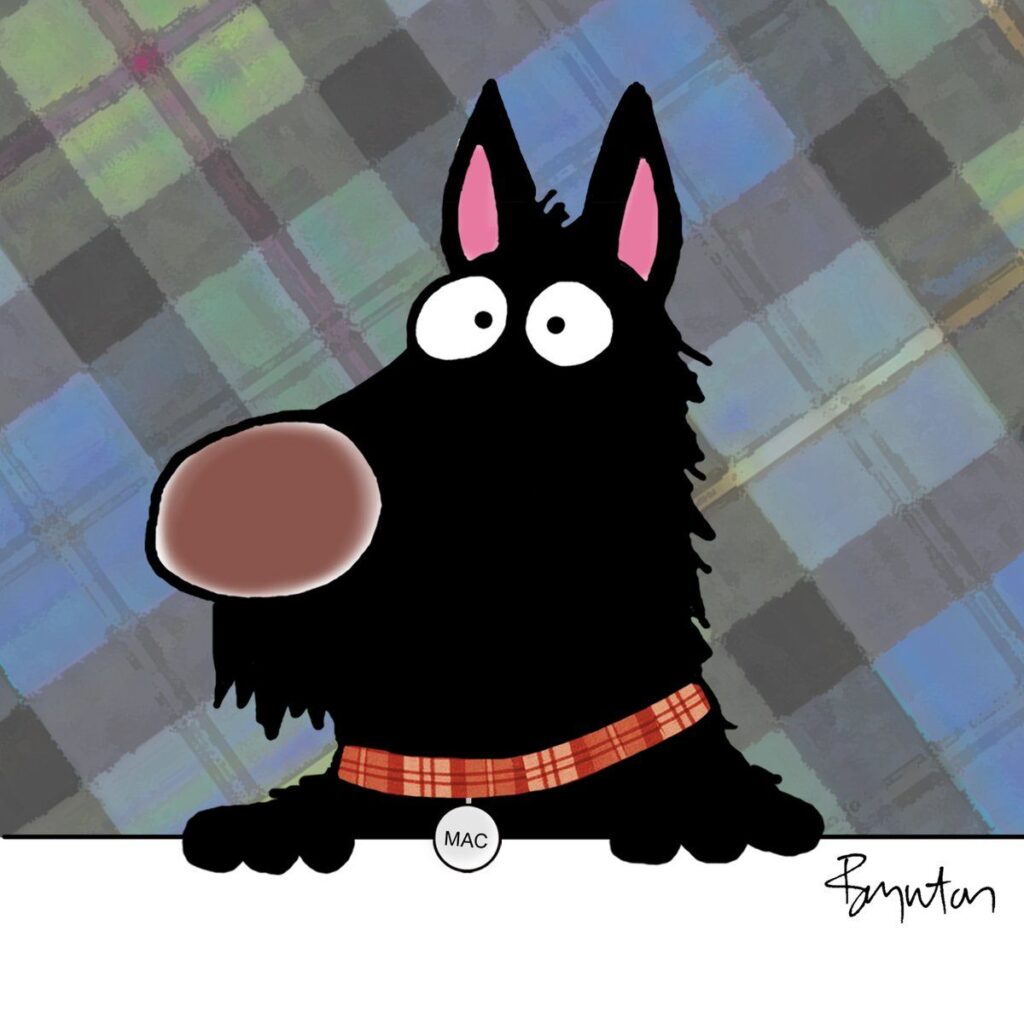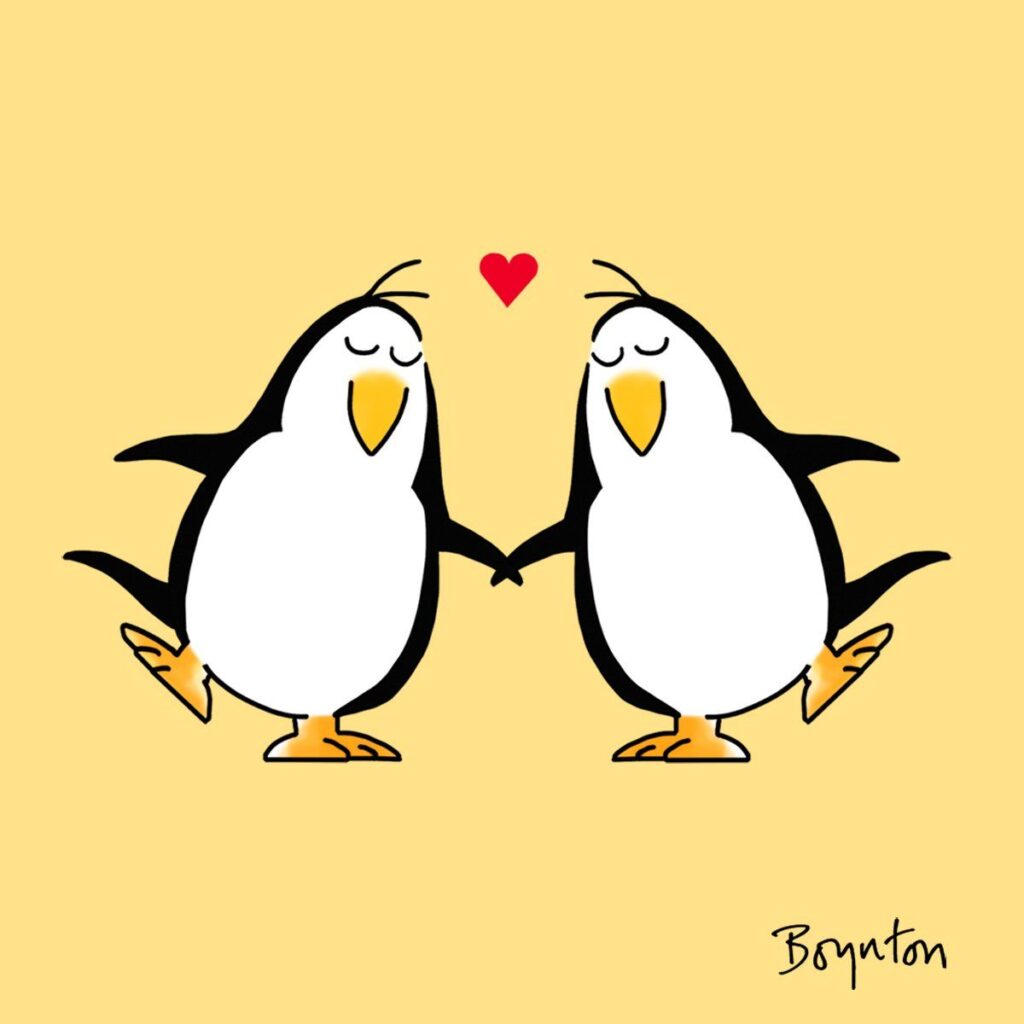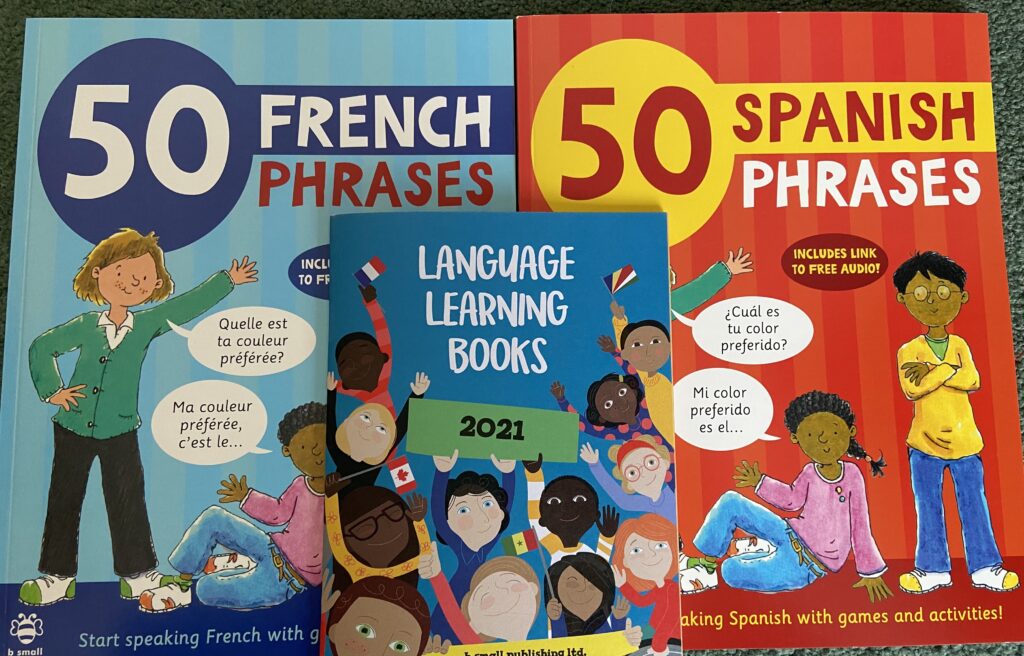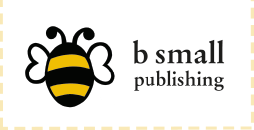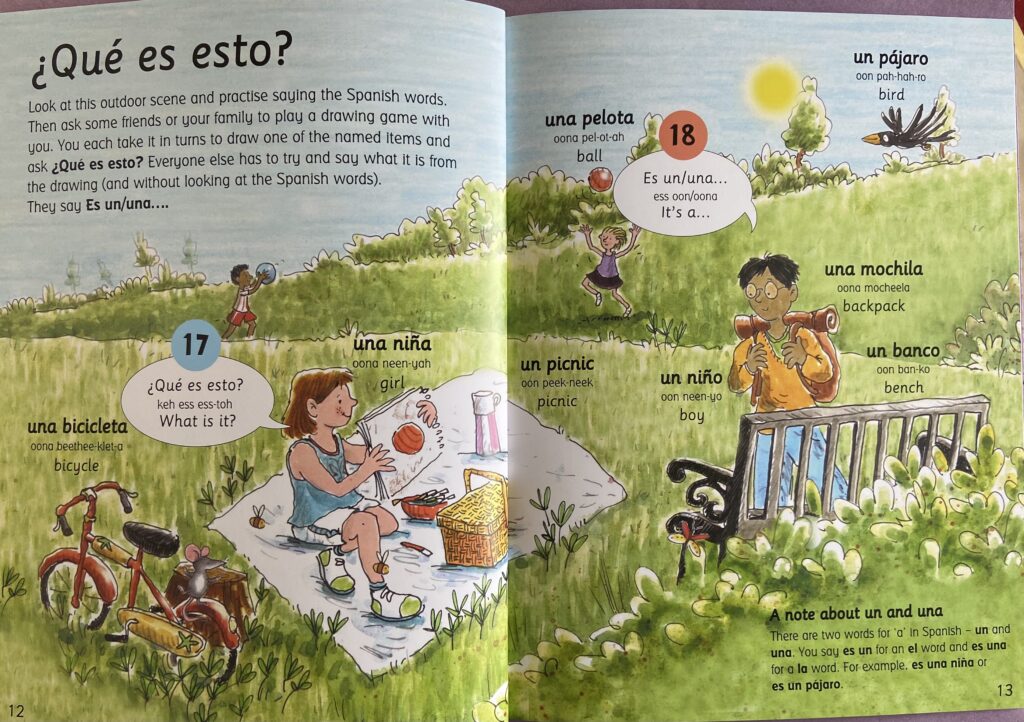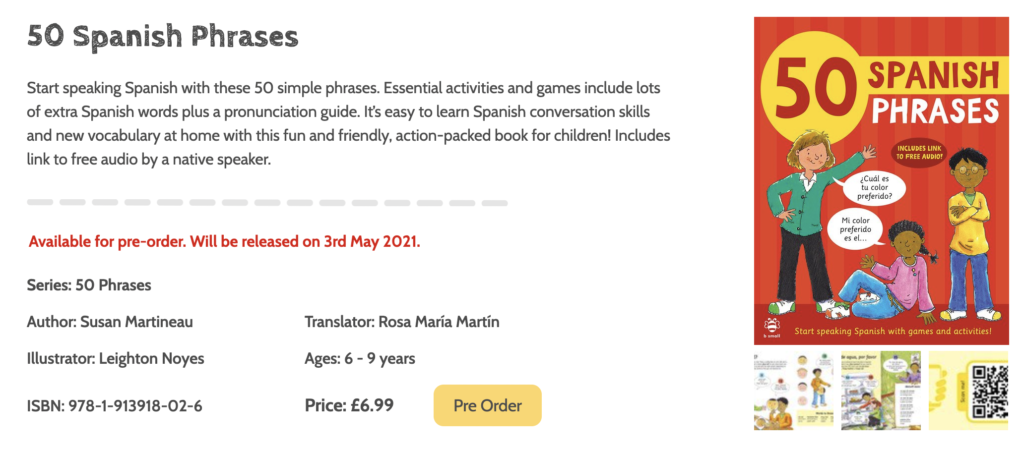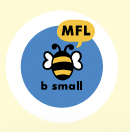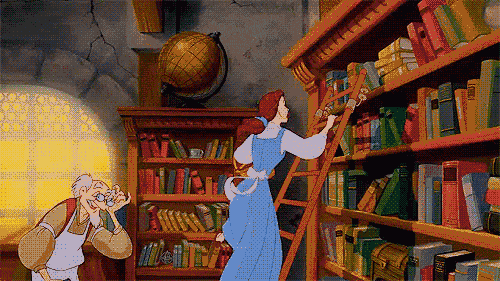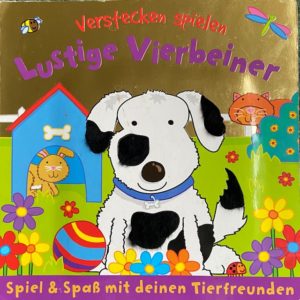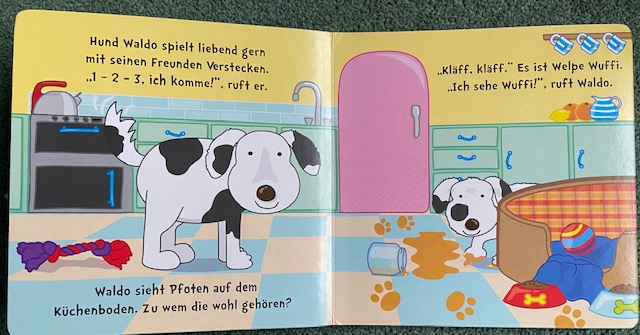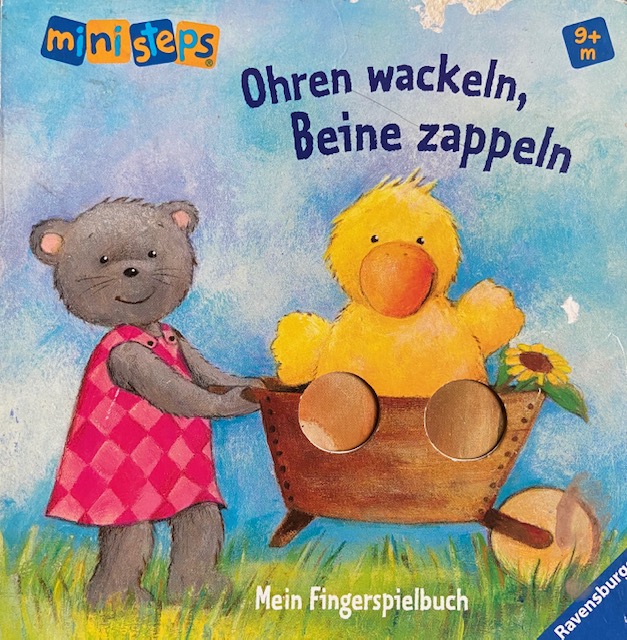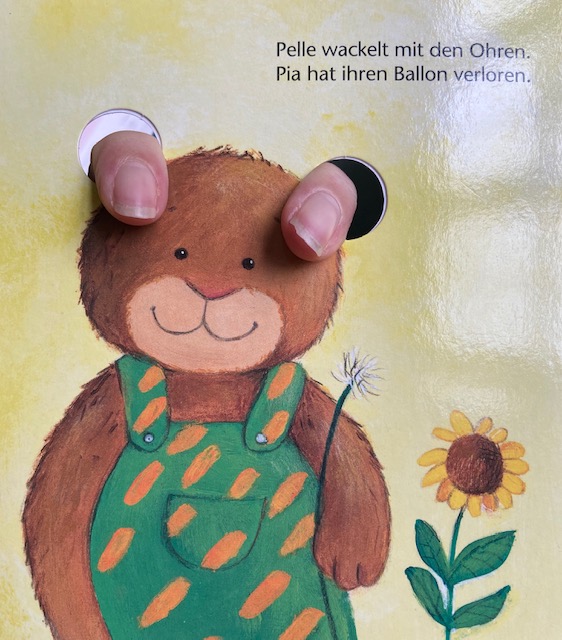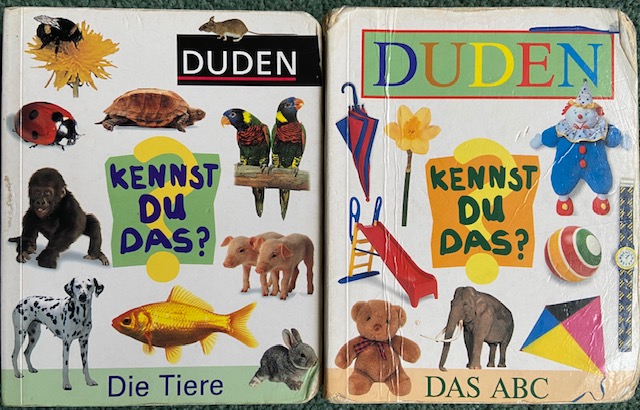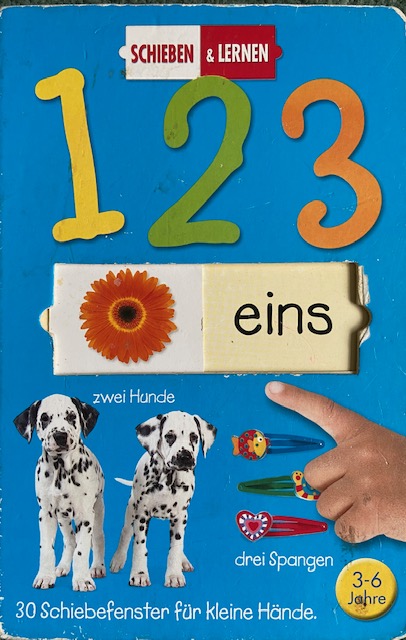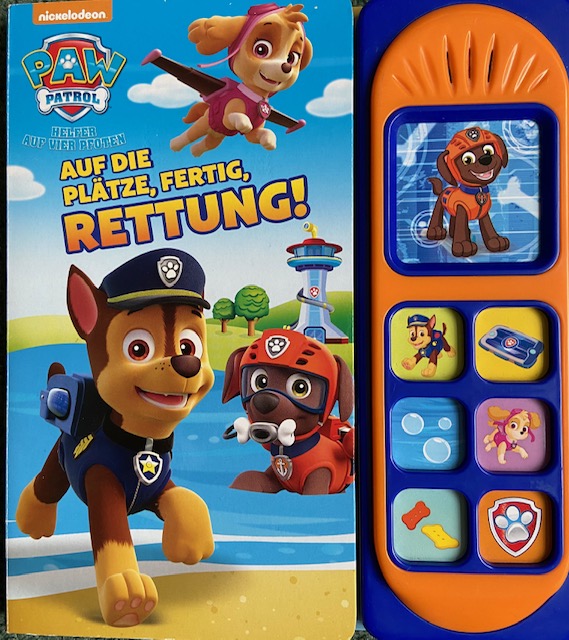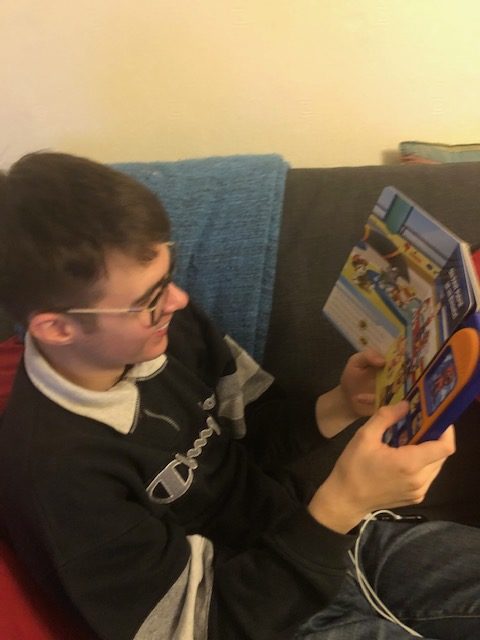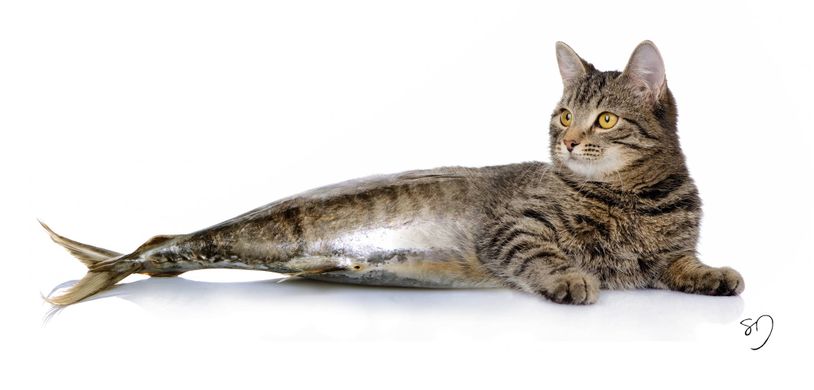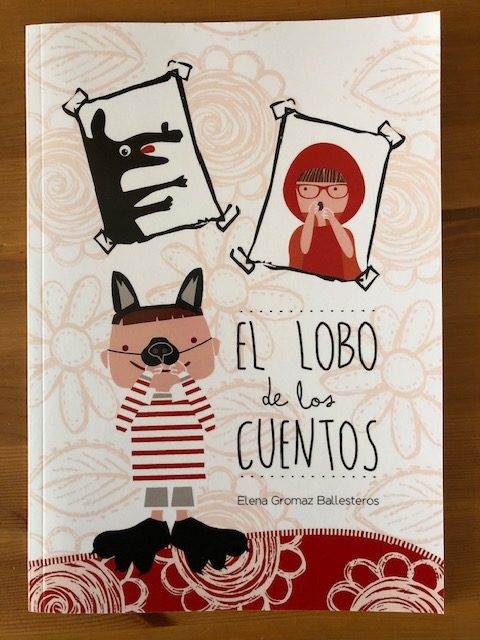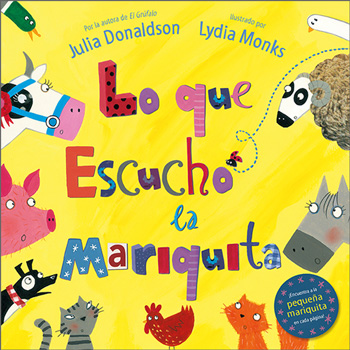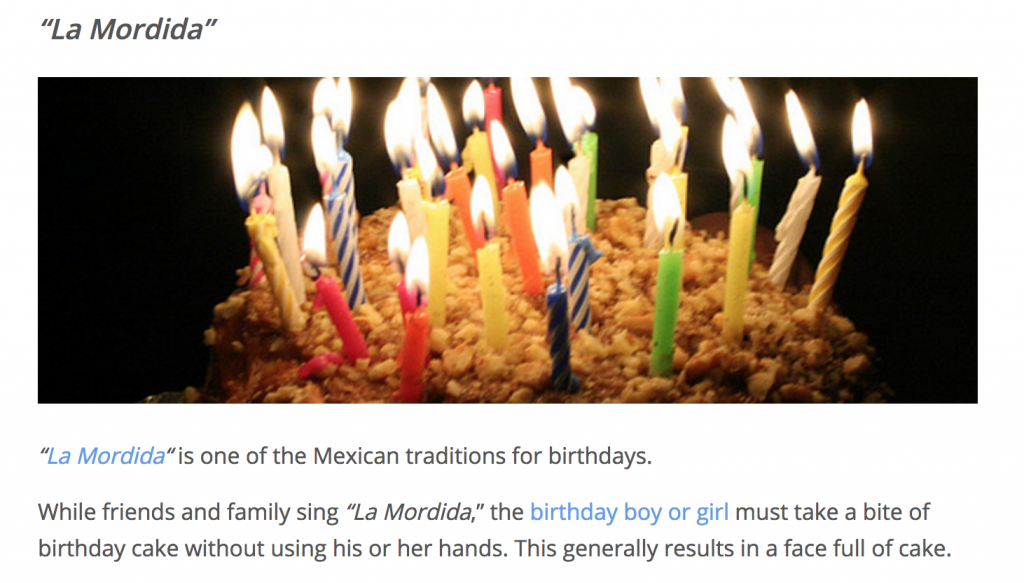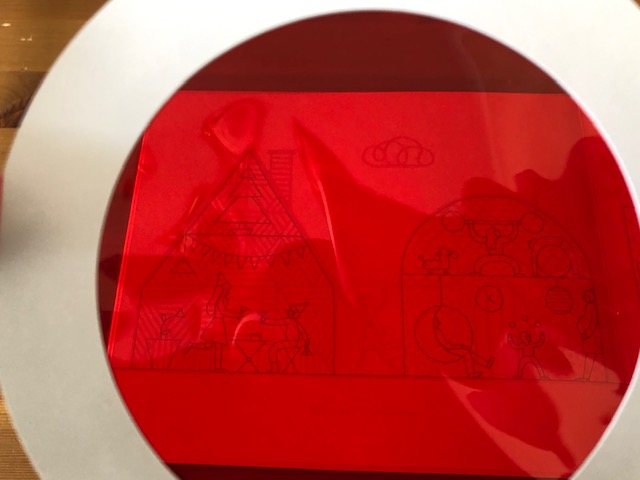Another (new to me) book by Sandra Boynton
Following on from my previous post, I also purchased this book. Whilst not a new publication, it’s new to me and I thought I’d share how I might use it.
This book also features Sandra Boynton’s trademark quirky animals with all the favourites including cows, pigs and the funky chicken!
Here’s the opening of the book that sets up the ‘story.’ What do you think it’s about? I’d encourage learners to use the cover picture, the illustration on p1 and the text to try and work it out. What are the animals on the cover doing? What is the cow doing? I’d expect ‘dancing’ and ‘playing an instrument/singing’ to be included in the responses. Depending on the learners’ knowledge of music/life experiences, they might put the dancing and the fiddle together to mention barn dancing, but some might need a bit of a steer in that direction. You could show a video of some barn dancing to give them an idea!
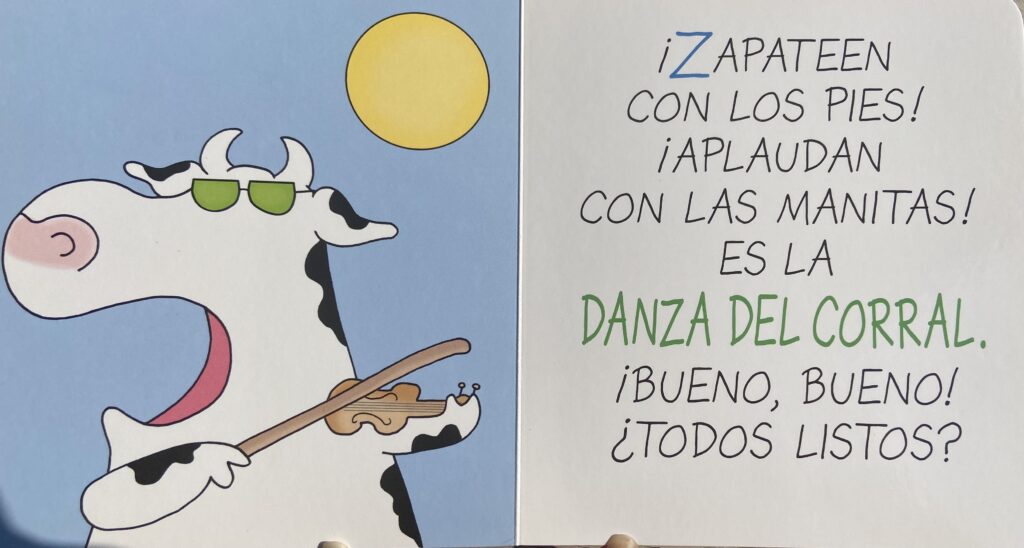
Next I’d look at the text. Which words can you pick out and suggest a meaning? ‘Aplauden’ (clap/applaud) and ‘danza’ (dance) are the most obvious but watch out for false friends ‘corral’ and ‘pies’! If learners have met body parts they might recognise ‘pies’ and possibly ‘manitas’ from manos (several finger rhymes that my learners have met include the word manitas though) So what are the instructions? Stamp your feet and clap your hands. Again, I’d expect my learners to recognise ‘¿listos?’ as I use it often, but it would be a good opportunity to learn it otherwise. So, are we ready for the barn dance?

The book then continues with instructions to do an action with an animal. Above we have hopping with a bunny, walk with a duck and dance with the mad chickens, clucking all over the place. Below you can see that there are also animal sounds to explore – which animal makes these sounds?
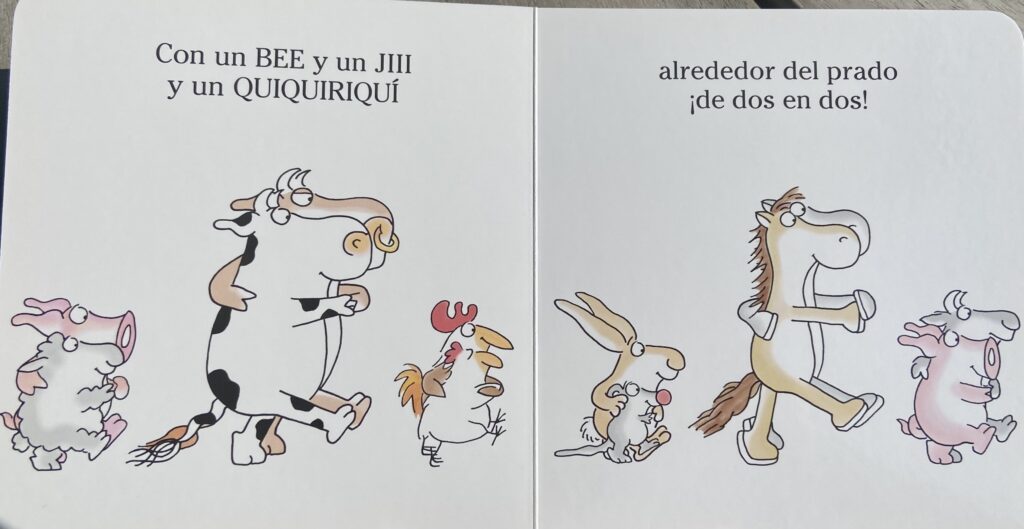
The whole book is one long dance routine and it’s a great text to get learners involved!
Here are some ideas!
- Read the text and learners do the actions.
- Give learners an animal and they stand up or hold up a picture each time their animal is mentioned.
- Match the animal to the action. ¿Brinca o galopa con el conejito? Brinca con el conejito. ¿Y con los pollos locos? Baila con los pollos locos
- Match the sound to the animal. ¿Qué dice beee – una vaca o una oveja?
- Explore more animal sounds; compare English and Spanish animals; explore other languages. I’ve got a great book called Animals Speak that would be great for this! (This post is about it, and another Sandra Boynton book!)
- As learners move around, hold up an animal picture and they change the way they’re moving according to the story.
- Follow the instructions and have a barn dance!
- Rewrite the instructions replacing the animals with members of the class – baila con Charlie; brinca con Evie; da vueltas con Israel; corre con Mariah etc
- Make up a routine with each learner adding a new move to the previous one(s) like Granny’s Shopping – how many moves can you remember and perform?
- Work on verbs – lots are -ar so could you work out how to say I jump if given the verb paradigm of a regular -ar verb?
- Make your own dance routine using the verbs
- Alter the instructions so it’s not brinca CON un conejito (jump/hop WITH a bunny) but brinca COMO un conejito (jump/hop LIKE a rabbit) then write your own sentences for a game that could be played in PE or at break!
Those are just a few activities that immediately spring to mind – do you have any to add?
